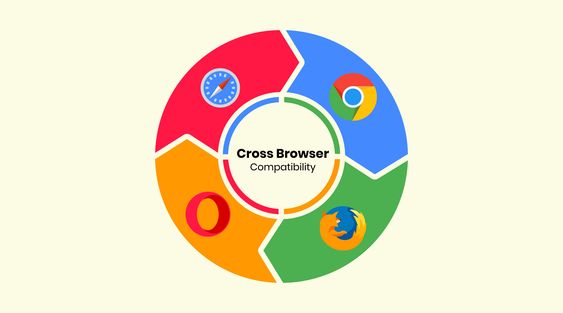I. Introduction
In the rapidly evolving landscape of web development, cross-browser compatibility has become an essential aspect of creating successful websites. As users access the internet through various browsers and devices, ensuring that a website functions consistently across different platforms is crucial. This article explores the significance of cross-browser compatibility in web development and its impact on user experience and bussiness success.
II. Understanding Browser Support
Web developers must be aware of the major web browsers and their respective market shares. Different browsers utilize rendering engines that interpret website code differently, leading to potential compatibility issues. Additionally, the use of vendor prefixes in CSS can affect how styles are applied across browsers, making compatibility testing an imperative step in the development process.
III. Cross-Browser Issues and User Experience
One of the key reasons for prioritizing cross-browser compatibility is to provide a consistent user experience. Inconsistent rendering can lead to layout problems, broken functionality, and frustrating user interactions. We explore common cross-browser issues and the importance of maintaining consistency to ensure a positive user experience.
IV. The Importance of Compatibility Testing
To deliver a seamless experience across browsers, compatibility testing is indispensable. Developers employ both manual and automated testing methods to identify and address potential compatibility problems. Regular testing throughout the development cycle helps catch issues early, saving time and effort in the long run.
V. Ensuring Compatibility with HTML and CSS
Writing semantically sound HTML and adhering to best practices in CSS are fundamental to achieving cross-browser compatibility. Properly structured HTML ensures that websites are accessible and understandable for both users and browsers. CSS challenges can be overcome with the use of CSS reset or normalize CSS, providing a consistent starting point for styling across browsers.
VI. Compatibility Challenges with JavaScript
JavaScript can present compatibility challenges due to differences in browser support for certain features and functions. We explore the significance of transpilers and polyfills, which enable the use of modern JavaScript features while ensuring compatibility with older browsers. Embracing progressive enhancement and graceful degradation techniques helps maintain functionality across a wide range of browser versions.
VII. Best Practices for Cross-Browser Compatibility
Developers need to choose the right approach to browser compatibility. Feature detection is favored over browser detection, as it allows websites to adapt to specific browser capabilities. Leveraging vendor prefixes and feature flags for emerging technologies helps navigate compatibility hurdles.
VIII. Embracing Responsive Design for Cross-Browser Compatibility
With users accessing websites on various devices, responsive design plays a pivotal role in cross-browser compatibility. Media queries allow developers to create fluid layouts that adapt to different screen sizes, ensuring an optimal experience on desktops, tablets, and smartphones.
IX. Handling Compatibility with Legacy Browsers
While it is crucial to prioritize modern browsers, websites must consider legacy browser support. Graceful degradation offers a strategy for providing a basic experience on older browsers while still delivering full functionality on modern ones.
X. The Business Case for Cross-Browser Compatibility
Investing in cross-browser compatibility is not only about user experience but also about business success. Websites that function consistently across browsers lead to better user retention, higher customer satisfaction, and improved search engine optimization (SEO) rankings.
XI. The Future of Cross-Browser Compatibility
As browsers continue to evolve, the importance of cross-browser compatibility remains relevant. We discuss strategies for staying ahead of future compatibility challenges and the role of web standards in promoting better cross-browser support.
XII. Conclusion
Cross-browser compatibility is a fundamental aspect of web development that cannot be ignored. Prioritizing compatibility testing, adhering to best practices in HTML, CSS, and JavaScript, and embracing responsive design are essential steps to ensure that websites deliver a seamless experience to users across various browsers and devices. By valuing cross-browser compatibility, web developers can create robust and user-friendly websites that cater to a diverse audience and contribute to the overall success of their businesses.





